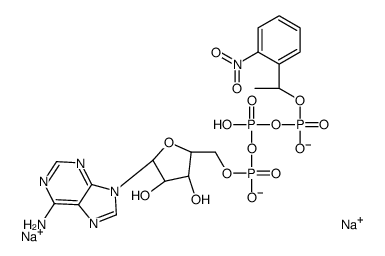The reaction process of firefly bioluminescence triggered by photolysis of caged-ATP.
Takeshi Kageyama, Masatoshi Tanaka, Takao Sekiya, Shin-Ya Ohno, Naohisa Wada
Index: Photochem. Photobiol. 87 , 653-658, (2011)
Full Text: HTML
Abstract
The reaction process of firefly bioluminescence was studied by photolyzing caged-ATP to adenosine triphosphate (ATP) within 100 ms. The intensity of luminescence increases markedly to reach a maximum within 1 s, maintains almost the same intensity up to 5 s and then decays monotonically. The rise γ(1) and decay γ(2) rate constants were determined to be about 5 s(-1) and 1 × 10(-2) s(-1), respectively, so as to phenomenologically fit the time course. A second luminescence peak appears after around 350 s. The dependence of the rate constants on the concentrations of reactants and a viscous reagent revealed that two kinds of reaction contribute the observed time course: (1) an intrinsic reaction by ATP photolyzed from caged-ATP that is already trapped in luciferase; and (2) a diffusion-controlled reaction by free ATP in the buffer solution outside luciferase. Numerical analysis based on reaction kinetics related γ(1) and γ(2) to the rate constants of a three-step reaction model, and accurately described the effects of concentration of reactants and a viscous reagent on the time courses of bioluminescence. Thus, it has been clearly concluded that the binding mode of caged-ATP at the catalytic center of luciferase is very different from that of ATP.© 2011 The Authors. Photochemistry and Photobiology © 2011 The American Society of Photobiology.
Related Compounds
| Structure | Name/CAS No. | Molecular Formula | Articles |
|---|---|---|---|
 |
CAGED ATP, DISODIUM SALT
CAS:171800-68-3 |
C18H21N6Na2O15P3 |
|
Levitational Image Cytometry with Temporal Resolution.
2015-07-08 [Adv. Mater. 27 , 3901-8, (2015)] |
|
Caged ATP as a tool in active transport research.
1986-01-01 [Soc. Gen. Physiol. Ser. 40 , 385, (1986)] |
|
Relaxation of muscle fibres by photolysis of caged ATP.
1982-12-23 [Nature 300 , 701, (1982)] |
|
Spectroscopic investigation of the reaction mechanism of Cop...
2009-11-01 [FEBS J. 276 , 6172-6186, (2009)] |
|
A new approach to time-resolved studies of ATP-requiring bio...
1980-12-01 [Proc. Natl. Acad. Sci. U. S. A. 77 , 7237, (1980)] |